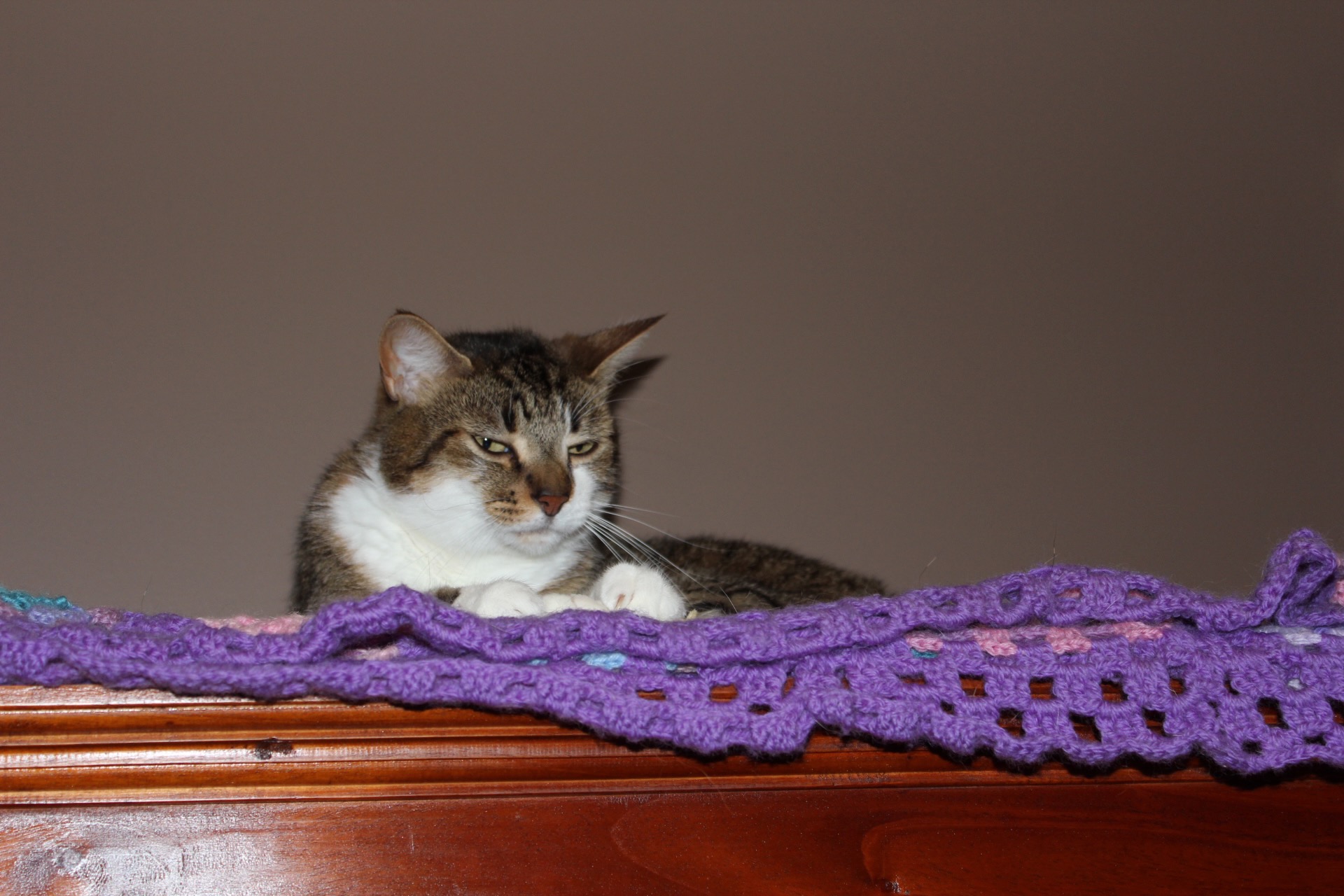Caring For Your Older Cat

The Older Cat – Twilight Years
With improved medical care and an understanding of proper nutrition and a healthy lifestyle, humans are living longer. The same is true for our cats. The standard of nutrition has improved, our insight into disease has evolved and basic and specialized healthcare has improved enormously. The result is, our pets are living longer than before. This also means that some special problems associated with old age will emerge and will become more frequent. No longer is it the age of the animal that determines when euthanasia should be considered, but rather the quality of life and the reversibility of health problems. It is not uncommon for us to treat or operate on cats of 20 years and older who are still enjoying quality of life.
Older cats face some special problems. The wear-and-tear effects of time are starting to show on the condition and function of most organ systems, including the skin, eyes, kidneys, heart, teeth, and joints. All cats older than about 10 years should be considered “old” and should receive special attention. Much of this attention will be based on nutrition and feeding, while regular veterinary examinations and early attention to small changes and problems should be exercised. Firstly, with age the metabolic rate declines, and if the same amount of calories was consumed as a young animal, the older cat will tend to become overweight. Obesity in itself puts extra strain on the joints and heart and can worsen existing medical conditions. On the other hand, very old cats tend to lose body weight and caloric intake should always be matched to the body condition and activity level to prevent both weight loss and obesity.
The aged cat will often suffer from a variety of musculoskeletal problems such as arthritis, back pain and muscular weakness. It may be necessary to change feeding positions to more accessible places, or to help an old cat up its favourite couch or windowsill. Painkillers should be used with great care, and only under the supervision of your veterinarian. Natural remedies are gaining favour in the treatment of these conditions and can be extremely beneficial.
All cats older than about six years should be considered to potentially have dental or oral problems. Caries and deep teeth lesions can be very painful and may interfere with or prevent eating. Bad teeth can also allow bacteria to enter the system and cause other illnesses. Regular teeth cleansing and polishing and possibly extractions should be performed by your veterinarian to ensure a healthy mouth. Some older acts will prefer soft food, which is easier to ingest.
Geriatric cats often suffer from failing kidneys. Although this cannot necessarily be prevented, once it is evident, the progression of disease can be slowed by always ensuring a supply of fresh water, by slightly decreasing the amount of protein and salt intake and by minimizing the intake of substances harmful to the kidneys, such as painkillers.
Cancer is more common in older cats than younger cats. Cancer may be very malignant and rapidly fatal or slow growing and more benign. Early detection is most important. Watch out for any sign of change in your cat and have it seen to. Remember, cancer can be cured, if it is detected and treated early.
To summarize, feed your older cat a good quality diet, matching the caloric contents to its physical condition. Watch for signs of abnormality or illness and have it attended to as soon as possible. Take it for regular health examinations by your vet and allow oral hygiene procedures to be performed. Above all, treasure the time you have with your friend, it is a special gift.
By Dr Malan van Zyl
Know your Cat or when to visit your Vet
Your cat should be fully examined by a veterinarian at least annually, even if it seems to be perfectly normal. This exam gives a firm basis on which to make further judgments about your cat’s health. It is a good idea to have some normal values established for your cat before illness sets in. These signs of normalcy will help determine which signs your cat is exhibiting when considering the need for medical attention and when discussing a potential problem with your cat’s doctor.
You should learn to check your cat from head to tail, looking for obvious medical problems. Normal temperature will be 37.7 to 39.2 oC, normal heart rate will be 160 to 2240 beats per minute, and normal respiratory rate will be 20 to 30 breaths per minute.
Once you know what is normal for your feline, and how to avoid illness, how do you determine the need for medical care? The basic rules are that if you would seek medical attention for yourself or your child with similar symptoms, are concerned enough to call your doctor or are unsure what you think, you should come in for an examination. Never downplay or deny the potential for serious illness most medical problems are more easily and cheaply treated if addressed early. Don’t let a friend, breeder, veterinarian hospital receptionist or anyone else talk you out of going to the veterinary hospital if you are concerned. No one knows your cat like you do.
Use common sense
While this discussion obviously cannot include all the potential indications for taking your cat to the doctor, it will serve well as a basis for helping you decide if a visit is needed. Adherence to the basic rules and common sense should cover most situations not directly addressed. If you are unsure how to proceed, do not hesitate to call. Help is almost always available. Remember, the bottom line is that you are responsible. Listen to your cat, watch it closely and learn its normal conditions. Seek medical care when needed, and you should have a loyal companion and source of constant entertainment for many years to come.
